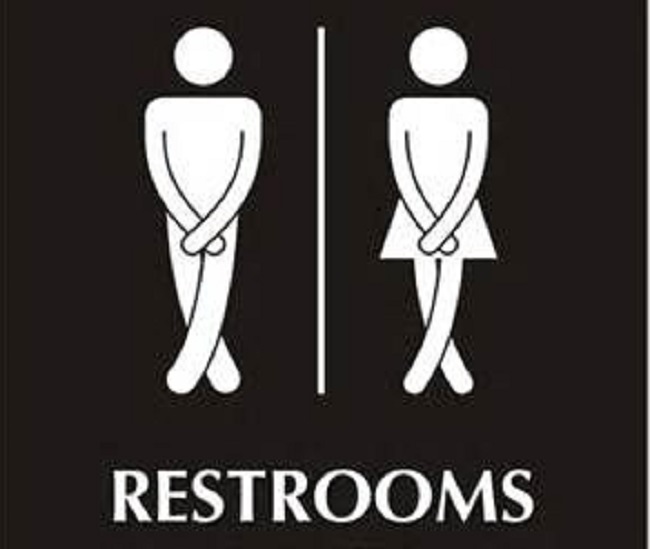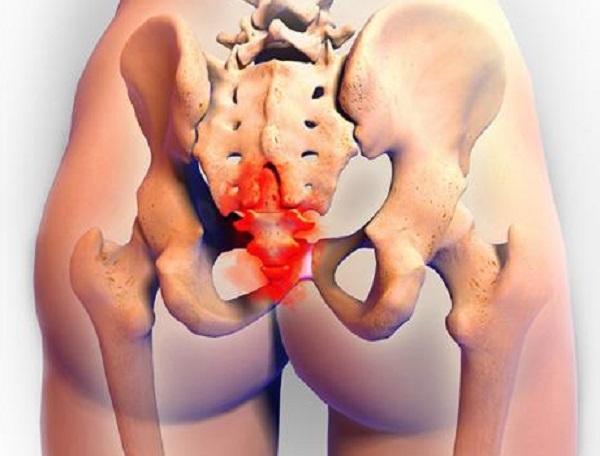Dear Dr. Wiseman,
I have been living with adhesions for over twenty years since the age of 21. After five years of period pains I was diagnosed with endometriosis and had five laparoscopic surgeries to remove it. I had relief for some while and then the pain came back. I also had adhesions, which they tried to remove, but they just came back. I don’t know what is worse – the endo or the adhesions.
At 30 I had a hysterectomy which they said would cure my endometriosis and pelvic pain. The pain only got worse and I started to have bouts of painful constipation and diarrhea which I was told was IBS. My belly was and is often bloated with a painful “pulling” sensation and severe gas.
Eight years ago my first bowel obstruction was caused by my intestine wrapping around my ovary. They tried to clean this up with surgery but I had five more obstructions and adhesions surgeries.
For about five years I have had lower back pain. Burning pain started 6 months ago when my bladder is full and when I pee, is about 14 times a day and 5 times at night. Being intimate with my husband is out of the question. My pain daily is an 8-10 and I have no quality of life. Of course the ER thinks you are a drug seeker when you come in continually for pain, but I go when I can’t tolerate anymore. I have tried hypnosis, massage therapy and acupuncture. I lost my job because I was either always taking days off because I was so tired from not sleeping, or in the bathroom. My health insurance has run out. I am taking Vicodin and Ambien.
I need to find someone who will listen to me. PLEASE, Jane
Patient Suffering
Although Jane’s email is a composite, it typifies the many we receive from patients who are at the end of their rope, having experienced some or all of these conditions: painful periods, endometriosis, generalized pelvic pain with adhesions, hysterectomy, IBS, painful bowel movements, bowel obstruction, bladder pain, lower back (sacroiliac joint) pain, painful intercourse, possibly vulvodynia and interstitial cystitis.
Many patients have endured years of suffering with confusing diagnoses. They come to us either because they are finally told they have adhesions, or after doing their own research, suspect that adhesions may be the cause of their problems.
What are Adhesions?
Adhesions are made up of scar tissue. Think of a scar as a patch repairing a punctured bike tire. The patch, or scar certainly does the job, but the tire is never the same again. Imagine being so careless with the glue that the tire is now stuck to the bike frame. This is an adhesion, an internal scar that connects organs or tissues that should not normally be connected.
Most internal organs are covered with a “non-stick” coating, but when this is damaged, organs close to one another will stick and knit together by means of reparative scar tissue.
MRI, CT or ultrasound detect adhesions only in limited circumstances.
The only way to see adhesions is by direct surgical observation. There is no blood test for adhesions.
What Causes Adhesions?
Almost any kind of trauma can induce adhesions, the most common of which is surgery. Organs can be damaged by being handled by a surgeon or surgical instruments, or by drying out in the air of an operating room or the gases used in laparoscopy. Non-surgical injuries including knife or gunshot wounds can also lead to adhesions. Endometriosis, infection (e.g. from a burst appendix), high doses of radiation, peritoneal chemotherapy or surgical sponges left behind can also cause the kind of damage leading to adhesions. Too many, too large and too tightly placed sutures cause adhesions as do many meshes used for hernia repair or organ prolapse (e.g. transvaginal or pelvic meshes).
What Problems do Adhesions Cause?
Imagine one end of your garden hose sticking to the other and you can easily see why adhesions around the intestine can cause it to twist or kink and obstruct. Infertility will result when the same thing happens to the fallopian tubes, the channels through which eggs travel from the ovary to the uterus. Sometimes they can cover the end of the fallopian tubes and prevent eggs from entering in the first place.
Adhesions make operating more dangerous and lengthy, increasing the chances of bleeding and damage to tissues. Adhesions from a prior cesarean section, will cost the newborn baby precious seconds in an emergency c-section.
Adhesions and Adhesions Related Disorder (ARD) and CAPPS
Adhesions patients with severe, long-standing disease develop what we call Adhesions Related Disorder (ARD): chronic abdominal or pelvic pain, recurrent bowel obstruction and sometimes malnutrition. With many doctors unable to provide a diagnosis, or unwilling to tackle adhesions, psychosocial issues abound from unemployment, poor insurance coverage, lack of disability benefits and alienation by friends and family who only see a malingering, drug seeker. ARD patients with bladder, pelvic, bowel, genital or sacroiliac joint pain become practically indistinguishable from those with similar constellations of symptoms arising from initial diagnoses of IC, IBS, endometriosis, etc. We call this CAPPS: Complex Abdomino-Pelvic and Pain Syndrome.
How Common are Adhesions?
Over 90% of patients having any kind of surgery may form adhesions and problems, many occur only decades later. Who develops adhesion-related problems and why is not fully understood.
The over 400,000 annual adhesion-related hospitalizations in the USA rival those for heart, hip and appendix operations with annual direct costs to the health system over $5 billion. Fully 35% of women having open gynecologic surgery will be readmitted 1.9 times in 10 years for secondary operations due to adhesions, or complicated by adhesions (Ellis et al., 1999; Lower et al., 2000). There are similar risks in laparoscopy (Lower et al., 2004) and in men also, but for a variety of reasons the problems appear to impact women more devastatingly from an economic and social perspective.
Over 2000 people die every year from intestinal obstruction due to adhesions.
Do Adhesions Cause Pain?
While patients suffering with adhesions are quite clear about whether they cause pain, within the medical community there is great debate. Much of the debate stems from a flawed study and the recognition that surgical removal (adhesiolysis) of the adhesions doesn’t always work. The lack of effective or complete pain relief after adhesion removal has led some to suggest that adhesions do not cause pain. For a full discussion about the problems with adhesion research click here. Additional considerations confusing the relationship between pain and adhesions include:
- Adhesions can form again after surgery, so pain may return.
- Adhesion removal may not correct scarring below the surface of affected organs or tissues. Scarring can entrap and tether nerves, preventing them sliding around in tissue as they need to during normal movement. When nerves are stretched because they are tethered, pain often results.
- Not all adhesions cause pain. Patients may have pain, and they may also have adhesions. One may not be the cause of the other, but may be the product of the same cause.
- Adhesions pain, may be “referred” – sometimes the pain is felt in other locations and not where the adhesions are.
- Chronic pain is different from acute pain. The mechanisms of chronic pain are not well understood but once pain has persisted, the system goes on auto-pilot and the biochemical and nerve changes induced by long-term pain become very difficult to undo with surgery. Furthermore, because of the interconnections between the nerves in the pelvic area, where many adhesions develop, pain or disturbances in function in one organ may “spread” to other organs.
- Bowel pain, a common symptom of adhesions patients is difficult to diagnose. In some cases, it is related to constipation from chronic opioid use. In other cases, it can be related to an adhesion caused bowel obstruction. (Bowel obstruction caused by adhesions or anything else, is an emergency often treated with surgery. If you have a history of obstruction you should identify a general surgeon to work with and plan as much as possible for these sorts of events).
- Long term use of opioids increases the sensitivity to pain which makes slight pain feel more painful and requires more medication to alleviate. It’s a vicious cycle that is very difficult to break.
What to do about Adhesions?
Prevention is the best treatment. If the only reason for surgery is pain, whether it is adhesiolysis (cutting of adhesions), hysterectomy or placement of an electrical neurostimulator (e.g. INTERSTIM®), be sure to exhaust all non-invasive options first and be aware that there are problems with each option.
- Adhesiolysis (surgery) has helped some patients but there is the risk of no effect or recurrence.
- Hysterectomy, in addition to incurring some long term health risks is likely to exacerbate the problems. Although it has helped some patients with pelvic pain, evidence concerning its efficacy, is minimal (Andrews et al. 2012). See here, here and here to learn more about the long-term consequences of hysterectomy.
- Neurostimulators carry their own number of risks and may preclude you from using non-invasive treatments like therapeutic ultrasound.
There are no easy answers and there is no magic wand. We advocate a multidisciplinary approach. Start with a gynecologist, urologist or urogynecologist that specializes in pelvic pain and who works closely with a general surgeon and a physical therapist specializing in pelvic pain/pelvic floor dysfunction and visceral manipulation (e.g. the Barral method). The team should also include a pain management doctor, psychologist, gastroenterologist, and a dietician/nutritionist. Pain or other difficulty with intimacy is common – do not be ashamed of talking about this, preferably with someone who specializes in sexual medicine.
Many patients have been able to achieve some relief and avoid surgery with pelvic floor physical therapy and/or visceral manipulation, careful control of diet, well placed and timed nerve blocks (e.g. pudendal nerve) and judicious use of opioids. We have found that a wearable therapeutic ultrasound device has brought relief to patients suffering with adhesions and other painful pelvic, bladder and genital symptoms (Wiseman and Petree, 2012).
If Surgery is the Only Option
If you must resort to surgery, insist that the surgeon uses powderless gloves and humidifies and warms the laparoscopy gases using a device called INSUFLOW®. Insist that an adhesion barrier be used where possible. Think of an adhesion barrier is a degradable type of “internal Band-Aid” that is placed over organs at risk of forming adhesions. Once the tissue has healed, the barrier dissolves because it is no longer needed. Adhesion barriers are not 100% effective and cannot be used in all situations. There are three approved in the USA – INTERCEED® Absorbable Adhesion Barrier, Seprafilm® Adhesion Barrier, and ADEPT® Adhesion Reduction Solution, the last of which appears to have limited utility. Other materials are used “off-label” which you can read about here.
Whether your adhesions are the cause of the pain, the consequence of pain or just happen to be there, you are still in pain and you are suffering. Educate yourself and those close to you about adhesions. The International Adhesions Society and the International Society for Complex Abdomino-Pelvic & Pain Society (ISCAPPS) provide the most up-to-date information on these conditions. We’ve also found these books to be useful:
- Endometriosis : The Complete Reference for Taking Charge of Your Health
- Secret Suffering: How Women’s Sexual and Pelvic Pain Affects Their Relationships (Sex, Love, and Psychology)
- Heal Pelvic Pain: The Proven Stretching, Strengthening, and Nutrition Program for Relieving Pain, Incontinence,& I.B.S, and Other Symptoms Without Surgery
- When Sex Hurts: A Woman’s Guide to Banishing Sexual Pain
Stay active as much as possible. Walk, garden, and exercise lightly. Stop smoking. Watch old funny movies. As difficult as it may be, it is important that you maintain a circle of family and friends, through a religious community or other group.
Above all, remember you are not alone and this is not in your head.
The information provided here is not intended nor is implied to be a substitute for professional medical advice. Always seek the advice of your physician or other qualified health provider prior to starting any new treatment or with any questions you may have regarding a medical condition.
References
Andrews J et al: Noncyclic Chronic Pelvic Pain Therapies for Women: Comparative Effectiveness. AHRQ Comparative Effectiveness Reviews 41. 2012 Jan; 11(12):EHC088-EF. http://www.ncbi.nlm.nih.gov/pubmed/22439157
Ellis H et al. Adhesion-related hospital readmissions after abdominal and pelvic surgery: a retrospective cohort study Lancet 1999; 353:1476. http://www.ncbi.nlm.nih.gov/pubmed/10232313
Lower AM et al. The impact of adhesions on hospital readmissions over ten years after 8849 open gynaecological operations: an assessment from the Surgical and Clinical Adhesions Research Study. Br J Ob Gyn. 2000; 107:855. http://www.ncbi.nlm.nih.gov/pubmed/10901556
Lower AM et al. Adhesion-related readmissions following gynaecological laparoscopy or laparotomy in Scotland: an epidemiological study of 24 046 patients. Hum Reprod. 2004; 19:1877 http://www.ncbi.nlm.nih.gov/pubmed/15178659
Wiseman, D. M. Disorders of adhesions or adhesion-related disorder: monolithic entities or part of something bigger–CAPPS? Semin Reprod Med. 2008; 26:356. http://adhesions.org/Wiseman2008SeminreprodMed26p356CAPPS.pdf
Wiseman, DM and Petree, T. Reduction of chronic abdominal and pelvic pain, urological and GI symptoms using a wearable device delivering low frequency ultrasound. International Pelvic Pain Society; Chicago, IL. 2012. http://www.kevmed.com/resources/Wiseman2012-IPPSMeetingChicagoPainShieldCPP-Thumb.png
This post was published previously July 2013.











